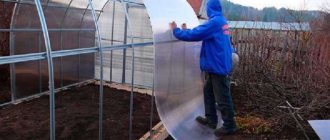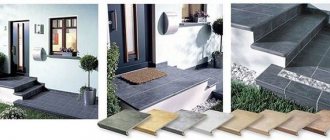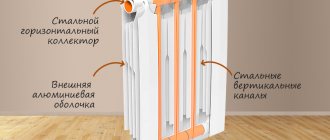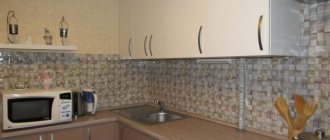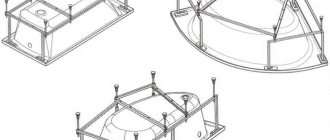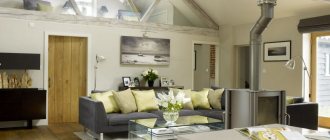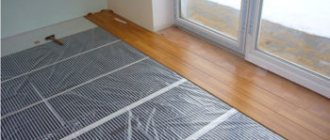About stairs
Website about stairs. We combine the experience of professionals and private craftsmen in one place
Popular
1 person discussing
Stainless steel staircase to the pool: characteristics, models, manufacturing instructions
4 people discussing
Staircases in Art Nouveau style: tips for creating a style
Wooden staircase on a slope - making your site comfortable and beautiful
How to assemble a wooden staircase - yourself and from ready-made elements
Finishing a monolithic staircase: considering possible options
Do-it-yourself staircase to the attic - installation of a stationary structure
Production of wooden stairs: ideas for small businesses and more
Iron staircase to the second floor - cold metal as an addition to home comfort
Do-it-yourself staircase in a wooden house - bringing beauty and comfort to the masses
Unusual and original stairs to a private house - choose your option
Porch with a gable canopy made of polycarbonate, finished with forged elements
The porch, as a functional and decorative structure, gives the entire building a finished and perfect look. For this to be exactly the case, it is necessary to design the porch in the same style direction as the house.
Not everyone can afford to decorate the entrance using expensive construction and finishing materials, but they want it to be beautiful, original and individual. These requirements are met by a porch made of polycarbonate, which is the most affordable and has a lot of positive qualities.
Two-level porch made of colored polycarbonate
In addition, the unique properties of the material, the variety of colors and types, allow you to find extraordinary design solutions for decorating the porch of the house.
In the article we will talk about the types of material itself, its pros and cons, as well as the possibilities of using polycarbonate in the construction of porches, and provide photos of the most interesting design options.
- Types of polycarbonate and their properties Cellular polycarbonate
- Molded polycarbonate
- Profiled (wavy) polycarbonate
- How else can you design a porch canopy?
Porch and its types
There are as many houses as there are porches.
Types of construction are classified according to shape, material, and method of installation. According to the form they are distinguished:
- arch;
- one ramp;
- two slopes;
- tent
Type:
- closed (with blank side walls);
- open (no side walls).
Open porch made of polycarbonate
Based on the material used:
- tree;
- brick;
- metal;
- concrete.
You can cover the porch with any roofing material or polycarbonate, which is convenient, functional and beautiful.
Selection of materials
Currently, in stores you can find a huge variety of materials for building a porch. Let's consider the most popular:
Tree. Making a wooden porch requires artistic skills. A porch made of carved wood or logs looks very beautiful.
Both open and closed porches can be built from wood. This is a suitable option for a country house. The disadvantage of this type is the need for careful care of the wood and its treatment with special compounds.
Profiled sheeting. Canopies and closed options are most often made from this material, since this material is translucent.
Corrugated sheeting is quite durable and, at the same time, lightweight material, which makes working with it much easier. In addition, it is resistant to aggressive environmental influences.
Wrought iron porch for a house in a democratic style. This porch option adds personality to the home, looks great and doesn’t require much maintenance.
Advantages of polycarbonate
Today, polycarbonate appears in almost every yard. Of course, products made from it are light, openwork, airy and durable.
The material has the following advantages:
- strength and long service life, more than 50 years;
- perfectly transmits light, but blocks ultraviolet radiation. This means that rainwater that gets on the porch will dry out quickly;
- withstands serious temperature changes, suitable for use in northern latitudes. Will not break under heavy snowfalls;
Choose polycarbonate to match the decoration of your home
- the flexibility of the material will allow you to design unusual, original designs;
- fire resistance and low smoke generation - an excellent property for a private home;
- variety of shades. You can build an orange or yellow sun porch using polycarbonate. And if you take a beige shade and combine it with aged bronze, the effect will be amazing;
- combines with any material: concrete, brick, aluminum, etc.;
- reasonable prices.
The disadvantage of using the material is that it is too light, and heaving soils can squeeze out the structure. For a polycarbonate porch, a reliable pile or slab foundation is built. Polycarbonate can be cellular (having air voids) and monolithic. Both types of sheets are used for construction, with a width of 2, 3, 6 m. The cellular material is considered more durable.
How to care for a polycarbonate visor
Polycarbonate is an excellent material that, with proper care, will retain its attractive appearance for a long period.
Technologists for the production of such material have several recommendations that help extend the life of the created structure.
- It is recommended to wash the canopy only 1-2 times a year. Dirt can be easily removed with warm soapy water. Do not use hot water, as this may damage the material.
- For washing, use only soft cloth and sponges. If you need to remove plaque or heavy dirt, use a brush with soft bristles.
- Remove fallen leaves and other debris that falls on the canopy with a soft broom. It will not damage the surface.
- When installing the structure, do not forget to take care of protecting the sheets from moisture and dirt - to do this, cover the ends with tape or buy special plugs.
- During the installation process, make sure that the protective film is on the outside, and remove it immediately after the canopy is assembled. If the film heats up under the influence of sunlight, it will be quite difficult to remove it from the surface of the sheets.
By following the rules for caring for polycarbonate, you can preserve its original appearance for a long time.
Common mistakes when caring for a polycarbonate canopy
In order for the structure to last as long as possible, remember what mistakes should be avoided during the operation of polycarbonate.
- Do not walk on the canopy - the material may not withstand it.
- When removing stains, do not use synthetic detergents. A high-quality solvent, isopropyl alcohol, is well suited for such purposes. These products do not use artificial fragrances.
- Do not clean the surface of the canopy with hard brushes. They leave marks in the form of scratches on the material.
Improper care of polycarbonate leads to its rapid wear and appearance of defects
Porch design and dimensions
In 2-3 days you can build a small porch yourself. If you study the topic well and follow the steps, then everything will work out. First of all, you need to design the future structure.
Attention! You can design a classic or original building. For example, in the form of a cheerful gingerbread house, the roof of which is made of polycarbonate pieces of different colors. An interesting porch - in the form of a wave rising from the left side. This porch has a solid roof and a left wall.
What does the building consist of:
- foundation;
- steps;
- area;
- visor;
- railings;
- side walls (optional).
Advice! If you are planning more than 3 steps, then you need to design the railings. Standard size is 80-90 cm.
On the project or drawing you need to indicate the dimensions of each element. It is advisable to make sure that the site can accommodate 2-3 people at the same time, and there is a place to open the door. The visor should not be narrow. The standard overhang length is 80 cm, the width of the canopy should exceed the doorway by 40-50 cm. The optimal step width is 30 cm, height is 14, 17 cm.
Scheme: porch for the house
Video description
In this video you will see several examples of the design of a wrought-iron canopy over the entrance:
Wave slate for awnings
This material was the most common a few years ago. Today it has lost a little of its popularity, but it is still used in roofing work. Wave slate has its advantages:
- the material is reliable and perfectly withstands environmental influences;
- such a roof is practically not heated by the sun's rays;
- Slate roofing will last a long time.
Despite all the advantages, slate also has disadvantages:
- heavy;
- sheets break easily;
- Due to the fragility of corrugated slate sheets, installation is difficult.
For a canopy covered with slate, you will need to install supports. Source garant-metall57.ru
Before making a canopy over the door from wave slate, you must take into account its weight, so the frame needs to be made strong, securely attached to the wall and taken care of the supports.
Wave slate can be replaced with analogues: plastic and euro slate. They also have similar waves, but at the same time weigh less and have a wide palette of colors that will look impressive on the roof.
Wooden canopy
For those who love wood products, it will be interesting to learn how to make a wooden canopy over the porch with your own hands. After all, this material has always been popular and still remains fashionable. These canopies are best suited for houses made of wood or with a similar design. The advantages of a wooden canopy are:
- environmentally friendly material;
- Truly decorative elements are made from wood;
- protects well from the scorching rays of the sun in summer;
- easy to install.
Wooden canopies look original Source viland-kovka.ru
Construction of an open porch. Foundation
Before construction, it is necessary to clear the site and build a foundation:
- Dig a pit from 80 cm to 1.2 m, depending on the groundwater level.
- Fill in 20 cm of sand.
- Build formwork and pour concrete. To save money, you can fill not a single slab, but four support pillars, or a tape around the entire perimeter.
- To ensure that there is no empty space under the platform, you can put natural stones there, but this is not necessary.
In the same way, using formwork, you need to fill the steps. Weld the frame of the lower part of the porch from metal and cover it with boards.
Installation of a polycarbonate canopy
Before starting work, you should check the availability of the following materials and tools:
- metallic profile;
- sheets of cellular polycarbonate with a minimum thickness of 10 mm;
Fastening polycarbonate to a metal profile
- drill, screwdriver, welding machine;
- self-tapping screws;
- pencil, tape measure, level.
Attention! The more jumpers there are on the canopy frame, the more stable it is.
Step by step guide:
- Mark the wall using a pencil, tape measure and level.
- Assemble the gable frame from the profile and weld the pipes. This work can be done on the ground.
- Sand the seams with sandpaper.
- Drill holes in the profile and attach the canopy to the wall with self-tapping screws or bolts. Fastening is carried out in four places, at the extreme corner points.
- Prime the canopy and paint it with exterior paint.
- Attach the polycarbonate by inserting screws at least 4 cm from the edge.
- The joint with the roof should be sealed with a metal strip. The porch is ready!
DIY frame
The initial task and the first stage is to create a project, calculate the starting materials and create a drawing:
we plan the size of the building taking into account its location; when choosing a roofing option, loads from precipitation and wind are taken into account; Design solutions for the frame design and color of the sheets are chosen from the general concept of the surrounding structures.
Having collected all the information, you can begin to calculate the source materials and frame drawings. When drawing up the drawing, the exact dimensions and shape of the roof, technical parameters and material of the supports and the frame itself, the number of fastening elements and their characteristics are used.
Particular attention should be paid to the standard size of all types of polycarbonate sheets. Therefore, the joints between them must necessarily fall on the sheathing
The width of the profile purlins is taken into account based on the parameters of the roofing material itself.
The height of the future structure directly depends on the wishes of the user; however, it is recommended that the lowest point of the roof be located at a level of approximately 180 cm from the floor.
To create the frame, the support posts are calculated in compliance with the following standards:
- the minimum permissible cross-section is forty by forty millimeters;
- if the supports are made of metal, the thickness is chosen from one millimeter;
- the thickness of the foundation pillars is laid with a value greater than ten millimeters from the taken cross-section of the support posts;
- the depth of the foundation is at least half a meter;
- for rafters, a profile with a cross-section of at least twenty millimeters is used; for lathing, a thickness of fifteen millimeters is used.
If your plans include building a structure with your own hands with an area of at least eight square meters, it is better to entrust the creation of the project, drawings and calculation of materials to specialists. The roof area over such a building is quite large, and only a specialist can calculate the load level. Errors in calculations lead to deformation of the frame or complete collapse of the entire building.
The choice of material for the frame in the construction markets is quite wide and varied.
The following materials are usually used for polycarbonate structures.
- Metal profile. Has durability during operation. It is unpretentious and requires minimal care in the form of treatment with anti-corrosion agents. The disadvantages include the heavy weight of the frame and its high price.
- Rolled metal pipes, for example, aluminum profiles. The advantages are the same as those of a metal profile. The downside is that the round cross-section is not so convenient for welding or other fastening methods.
- Wooden beam, rounded or profiled. An environmentally friendly, living material, if the frame of the building is stylized to a certain design. When doing work with your own hands, carpentry skills are required; wood requires some care, and its performance is not so durable.
Construction of an enclosed porch. Foundation, steps
The closed version is a more complex design that involves the construction of a foundation, base, roof, and side walls. You should start with the foundation and steps:
- Dig a hole the depth of which is equal to the depth of the foundation pit for the house.
- Fill the bed with sand, then with gravel.
- Install the formwork and pour the concrete slab.
- After the concrete has dried, place broken bricks on the base. Then - a mesh of reinforcement, this will strengthen the foundation and connect it to the house.
- Pour the threshold onto the mesh. For strength, insert the reinforcement vertically.
- Lay out the steps using bricks and mortar.
Installation of walls and arched roof
To construct the upper part of the porch, building materials are needed:
- metal support poles;
- profile for sheathing;
- polycarbonate sheets;
- tapes and end profile for fastening the polymer;
- grinder, welding machine, screws, washers;
- primer, paint.
Advice. Holes in polycarbonate need to be drilled 3 mm larger than the screw leg. This gap is for thermal expansion. The distance between the holes is 30 – 50 cm.
Step-by-step instruction:
- Install four supports.
- Cut them to the required height and tie them with a profile pipe.
- Cover the support pillars with polycarbonate sheets on both sides.
- Temporarily secure the top with ties, which will need to be removed when attaching the canopy. When the frame is ready, start creating an arched roof.
- Prepare the pipes by cutting them to size.
- Make cuts in the pipes and bend them according to the template in the shape of an arch.
- Weld the arcs together with jumpers and attach them to the support posts.
- Then clean the joints, prime and paint the frame.
- After the structure has dried, attach a polycarbonate sheet to the canopy. Seal the joints with tape and put on the end profile.
Arched polycarbonate porch
Experts advise avoiding contact between polymer and metal by using 4 mm thick gaskets. For fastening, it is better to use special thermal washers, without using inappropriate nails or rivets.
The classic version of the porch involves a gable roof, wooden railings with balusters. French - openwork forged patterns. Modernism is distinguished by strict forms, the presence of aluminum and glass. The main thing is that the porch matches the house and is not only beautiful, but also a functional design.
Requirements for the visor
A high-quality visor should have good rigidity. This condition allows the structure to withstand heavy loads, for example, during heavy rain or snowfall. The accumulated snow will be very heavy, so the shape of the visor should help it slide. A strong wind should not tear off the visor, so it is important that the structure frame is strong.
An abundance of snow can tear the polycarbonate canopy off the wall
Despite such recommendations, the canopy may extend to the driveway. This way, when getting out of the car you won’t have to get wet in the rain. You can also extend the canopy to create a nice canopy for your terrace. However, this option will require the installation of additional supports.
Installing additional supports is a more practical solution than increasing the thickness of the supporting beams
The shape of the visor should:
- prevent snow accumulation;
- provide drainage;
- harmonize with the design of the facade.
When planning a canopy, you need to think through the drainage system in advance to increase resistance to rain.

